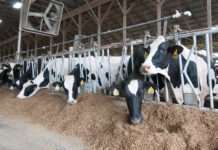Fertilizing is an important practice, but it is not a cure-all. Fertilization cannot compensate for:
* Poor soil structure which does not allow for adequate drainage or aeration.
* Undesirable soil pH or salt content of the soil.
* Poor seeds, diseased, or unhealthy plants.
* Shade trees or tree roots in or around the garden area.
The addition of organic matter will ensure that some fertilizer nutrients are in the soil.
You may need to add commercial fertilizer as well. Most chemical fertilizers are simply
rock or mineral materials rich in nutrient elements. The nutrient elements that plants require can be supplied by either organic or commercial fertilizers. All plants require 16 nutrient elements for growth. Thirteen of these come from the soil.
When organic fertilizers are used, they must break down to release these basic fertilizer elements in the soil before the plants can use them. Regardless of the form of fertilizer–organic or chemical– the plant makes no distinction as long as the nutrients are there. However, large quantities of organic materials must be used compared with more concentrated commercial fertilizers.
Organic fertilizers
Organic matter is a vital part of any soil and benefits the soil in several ways. When incorporated into the soil, decaying organic residue serves several useful functions:
* Loosens tight clay soils to provide better drainage.
* Provides for better soil aeration which is necessary for good root growth.
* Increases the water-holding capacity of all soils. This is especially helpful on sandy soils.
* Makes soil easier to till and easier for plant roots to penetrate.
* Supplies nutrients for plant growth.
Other commercial or processed fertilizers may be available. Consult the label for nutrient content.
Chemical fertilizers
The nutrients most frequently lacking for growth are nitrogen (N), phosphorus (P), and potassium (K).
N (Nitrogen).
— This nutrient element provides dark green color in plants. It promotes rapid vegetative growth. Plants deficient in nitrogen have thin spindly stems, pale or yellow foliage, and smaller than normal leaves.
* P (Phosphorus)
— This nutrient promotes early root formation, gives plants a rapid, vigorous start, and hastens blooming and maturity. Plants deficient in this element have thin, shortened stems, and leaves often develop a purplish color.
* K (Potassium)
— Potassium or potash hastens ripening of fruit. Plant disease resistance as well as general plant health depend on this element. It is also important in developing plump, full seeds. Plants deficient in this element have graying or browning on the outer edges of older leaves.
The content of N, P, and K is specified on bags of chemical fertilizers. The analysis or grade refers to the percent by weight of nitrogen, phosphate, and potash in that order. Thus, a 10-10-10 fertilizer contains 10 percent nitrogen (N), 10 percent phosphate (P205) and 10 percent potash (K20).



